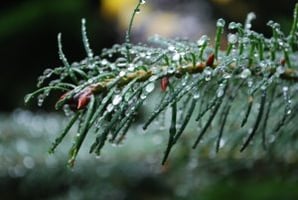Save money in your garden and keep your perennial plants healthy by learning how to divide them yourself properly. Follow our helpful guide to get this fun gardening job done right.
Avid gardeners know that it never hurts to divide your perennials. Dividing your perennial plants will help keep them healthy and beautiful. It also makes more plants for future plantings! The reasons you should divide your perennials are endless. Many perennial plants grow quickly, forming large clumps. If you don’t divide them every 3-4 years, these clumps can die out in the middle, leaving an empty, bare hole. Overcrowding these perennials can lead to fewer or smaller flowers than if they were well-spaced and divided. Dividing plants also leaves you with more individual plants of the same variety, perfect for adding to other places in your garden or gifting to family, friends or neighbors!
Here are a few things to keep in mind before you begin dividing your perennial plants.
When to Divide Your Perennials
You can divide most perennial plants any time of the year, from spring to fall. However, those two seasons are usually best. Dividing plants can be stressful to the actual plant and they will recover better from the shock if conditions are cool and moist. If you do divide plants in summer, just be sure to keep them well watered. Also make sure plants are large enough to divide into several clumps.
How to Divide Perennials
Perennial plants such as hostas, asters and yarrow can be divided easily with no hassle. All you need is a shovel and work gloves to get the job done. First, you dig up the clump of perennials that will be divided. Insert the shovel deep into the soil around the perimeter of the plant to loosen the roots and isolate the clump. To help, you could water the perennial plant a few days before you dig it up to help soften the soil, saving you a bit of effort. Then, lift the shovel and root ball. Be careful to keep the root system as intact as you can. Then gently shake or brush any excess soil from around the root ball. Now you can cut or pry apart individual crows. Each clump needs to have a set of leaves and roots in order to grow. Replant all divisions quickly so roots don’t dry out. Plant at the same depth as the original plant and water well. You can also cover the soil with mulch to help conserve moisture while your new divisions become established.
It’s important to keep in mind that these general instructions work for most perennial plants, but not all! Some perennials don’t benefit from being divided, such as: bleeding heart, butterfly weed, lavender and oriental poppy. If your unsure, most plants have plenty of resources available online for information. Just look up the specific variety of plant you have and find it’s recommendations on dividing. Use your divided perennial plants to add more landscaping plants to your own yard, or give them as fun summer gifts to family and friends! Learn more about perennial plants here, including how to prepare perennial plants for winter and adding native, perennial plants to your garden beds.


